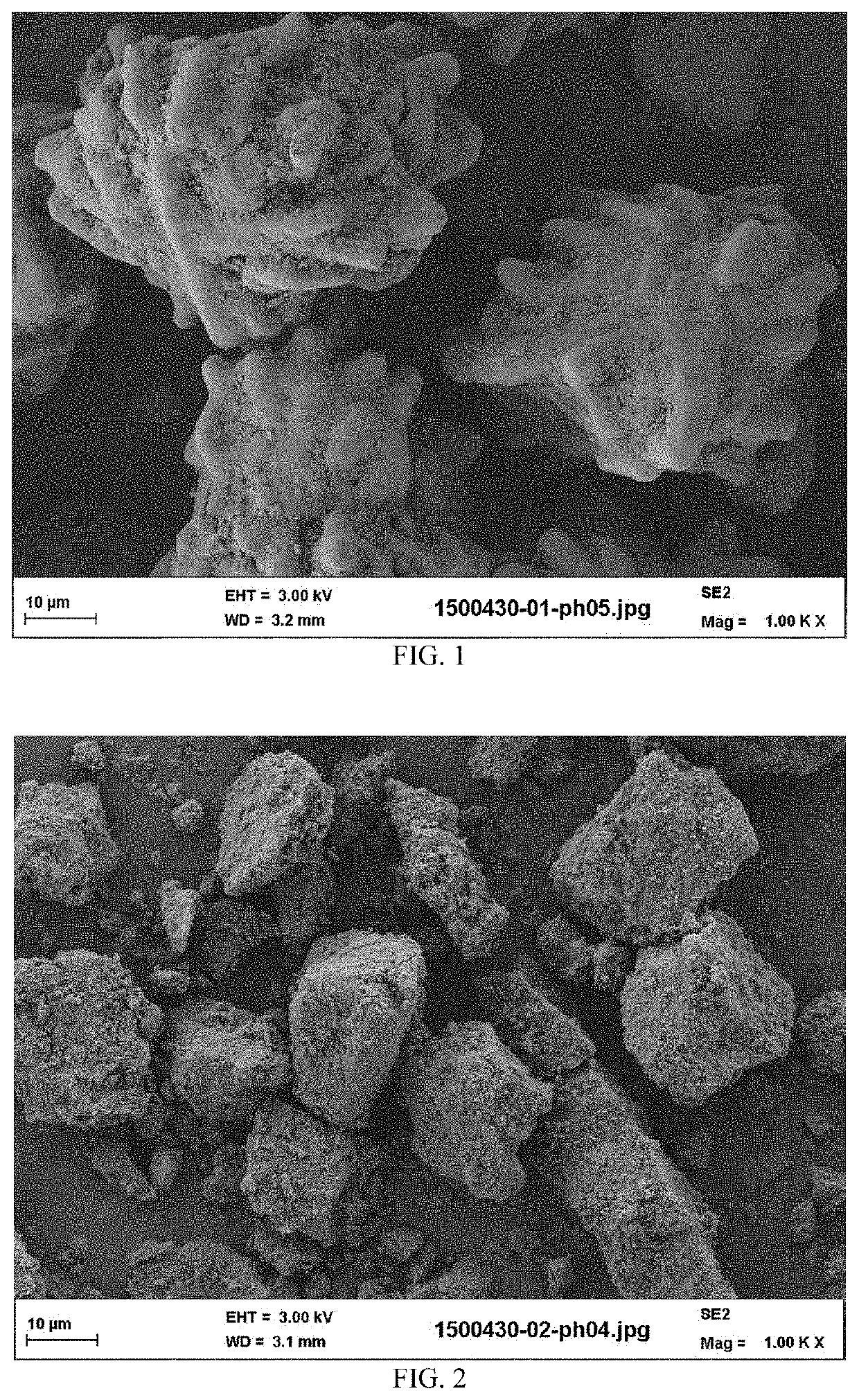Process for producing a calcium phosphate reactant, reactant obtained and use thereof in the purification of liquid effluents
a technology of calcium phosphate and reaction reaction, which is applied in the direction of chemistry apparatus and processes, other chemical processes, specific water treatment objectives, etc., can solve the problems of reducing the efficiency of calcium phosphate reaction, so as to achieve the effect of effective reaction and limit the emission of phosphates
- Summary
- Abstract
- Description
- Claims
- Application Information
AI Technical Summary
Benefits of technology
Problems solved by technology
Method used
Image
Examples
example 1 (
IN ACCORDANCE WITH THE INVENTION)
[0119]500 g of limestone in powder form having a D50 of less than 300 μm are dispersed in 2469 ml of water at a temperature of 20° C. 646 g of phosphoric acid (H3PO4) having a weight concentration of 75% are added to this suspension, over a duration of 20 minutes using a peristaltic pump. This addition is accompanied by a temperature increase of 13° C. The mixture continues to be stirred vigorously using a stirrer having 4 inclined blades at 700 rpm (power dissipated by the stirrer of the order of 1 kW / m3), ensuring a good mixing of the sources of calcium and phosphate ions, and making it possible to degas the carbon dioxide formed during the addition of acid. At the end of the addition of acid, the suspension is then heated to 60° C. Once the suspension is at this temperature, a 25 wt % suspension of Ca(OH)2 (244 g of Ca(OH)2 suspended in 732 g of water) is added using a peristaltic pump in order to maintain the pH of the suspension at 10±0.5 for 60...
example 1a (
IN ACCORDANCE WITH THE INVENTION)
[0121]500 g of limestone are dispersed in 2469 ml of water at 50° C. 646 g of (75%) H3PO4 are then added to this suspension, over 20 minutes using a peristaltic pump. The mixture continues to be stirred vigorously at 700 rpm (1 kW / m3) using a 4-blade stirrer, enabling the mixing of the compounds and making it possible to degas the carbon dioxide formed during this step. At the end of the addition of acid, the mixture is stirred for 30 minutes. A 25 wt % suspension of Ca(OH)2 (250 g of Ca(OH)2 suspended in 750 g of water) is then added using a peristaltic pump in order to maintain the pH at 10±0.5 for 60 minutes. Once the 60 minutes have passed, the heating is stopped and the stirring is continued but reduced to 50% of its power and the suspension is left to cool for about 10 hours until it returns to ambient temperature (22° C.).
[0122]The calcium phosphate reactant particles of the suspension have, as composition: 95% by weight of hydroxyapatite, 4% ...
example 1b (
IN ACCORDANCE WITH THE INVENTION)
[0123]Calcium phosphate reactant particles were prepared in the same conditions as the ones of example 1, except at the end of the addition of acid, the suspension is then heated to 50° C., and once the suspension is at this temperature, the 25 wt % suspension of Ca(OH)2 is added to maintain the pH of the suspension at 9±0.5 for 60 minutes. Once the 60 minutes have passed, the heating is stopped and the stirring is continued but reduced to 50% rotational speed and the suspension is left to cool for about 10 hours until it returns to ambient temperature (22° C.) as example 1.
[0124]The calcium phosphate reactant particles of the suspension have, as composition: 94% by weight of hydroxyapatite, 5% by weight of calcium carbonate, and comprising 3.5% of hydroxide ions. The final density of solid suspension in aqueous suspension (B) was 18% in weight (solid weight reported to total weight of the aqueous suspension). The physical characteristics of the calc...
PUM
| Property | Measurement | Unit |
|---|---|---|
| molar ratio | aaaaa | aaaaa |
| molar ratio | aaaaa | aaaaa |
| temperature | aaaaa | aaaaa |
Abstract
Description
Claims
Application Information
 Login to View More
Login to View More - R&D
- Intellectual Property
- Life Sciences
- Materials
- Tech Scout
- Unparalleled Data Quality
- Higher Quality Content
- 60% Fewer Hallucinations
Browse by: Latest US Patents, China's latest patents, Technical Efficacy Thesaurus, Application Domain, Technology Topic, Popular Technical Reports.
© 2025 PatSnap. All rights reserved.Legal|Privacy policy|Modern Slavery Act Transparency Statement|Sitemap|About US| Contact US: help@patsnap.com


